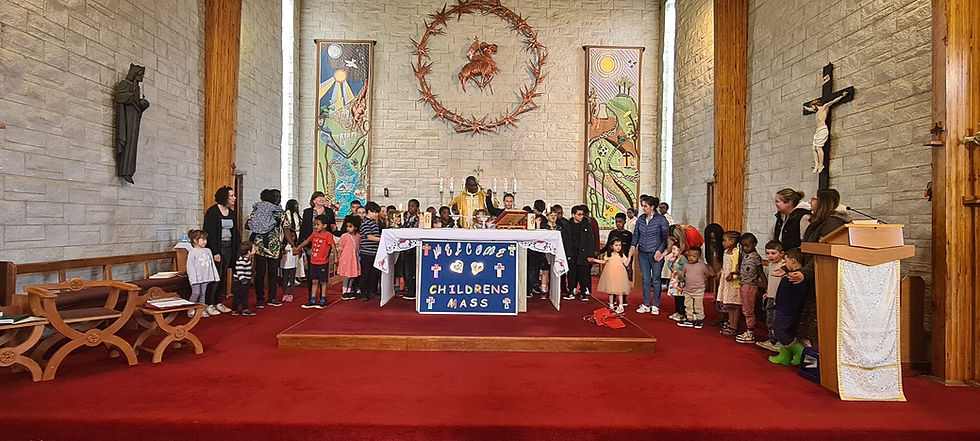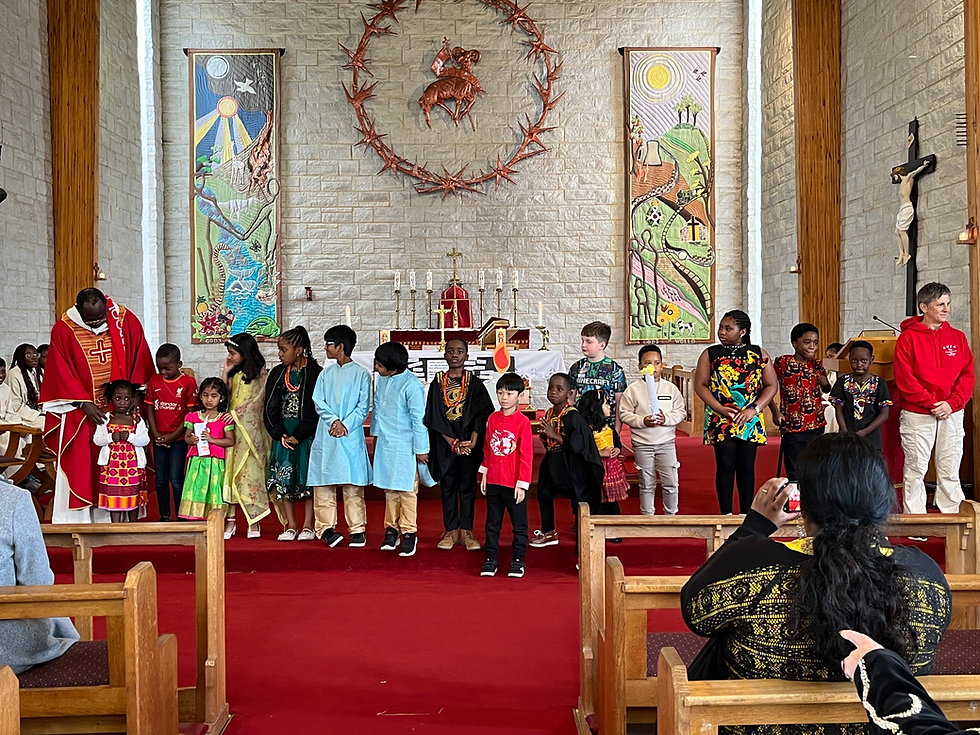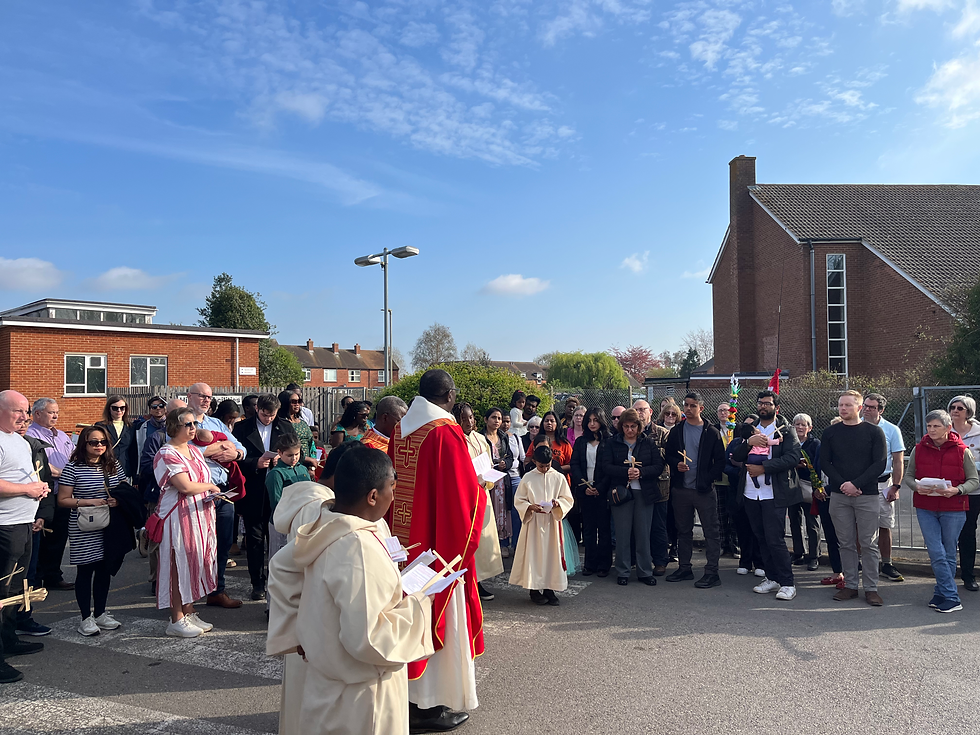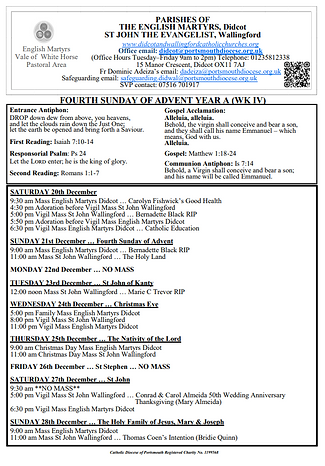Welcome to the English Martyrs Didcot and St John Wallingford parish website. We are two neighbouring churches within the Catholic Diocese of Portsmouth. We currently have about five hundred regular parishioners and many activities.




Welcome to English Martyrs Didcot &
St John Wallingford Parish
English Martyrs Church Didcot is open daily for private prayers between 8am and 5pm (Monday closed).
St John the Evangelist Church Wallingford is open daily for private prayers between 8am and 6pm.
The Season of Advent

Beloved, now is the acceptable time spoken of by the Spirit, the day of salvation, peace and reconciliation: the great season of Advent. This is the time eagerly awaited by the patriarchs and prophets, the time that holy Simeon rejoiced at last to see. This is the season that the Church has always celebrated with special solemnity. We too should always observe it with faith and love, offering praise and thanksgiving to the Father for the mercy and love he has shown us in this mystery. In his infinite love for us, though we were sinners, he sent his only Son to free us from the tyranny of Satan, to summon us to heaven, to welcome us into its innermost recesses, to show us truth itself, to train us in right conduct, to plant within us the seeds of virtue, to enrich us with the treasures of his grace, and to make us children of God and heirs of eternal life. Each year, as the Church recalls this mystery, she urges us to renew the memory of the great love God has shown us. This holy season teaches us that Christ’s coming was not only for the benefit of his contemporaries; his power has still to be communicated to us all. We shall share his power, if, through holy faith and the sacraments, we willingly accept the grace Christ earned for us, and live by that grace and in obedience to Christ. The Church asks us to understand that Christ, who came once in the flesh, is prepared to come again. When we remove all obstacles to his presence he will come, at any hour and moment, to dwell spiritually in our hearts, bringing with him the riches of his grace. In her concern for our salvation, our loving mother the Church uses this holy season to teach us through hymns, canticles and other forms of expression, of voice or ritual, used by the Holy Spirit. She shows us how grateful we should be for so great a blessing, and how to gain its benefit: our hearts should be as much prepared for the coming of Christ as if he were still to come into this world. The same lesson is given us for our imitation by the words and example of the holy men of the Old Testament. [Portsmouth Diocese e-News]
Donate to English Martyrs Didcot & St John Wallingford
Parishioners of English Martyrs Didcot and St John Wallingford can now access our Parish Online Donation Page to make donations to a specific purpose or set up regular offerings. You can scan the QR code or click on this link:

Past events












Where to find us
English Martyrs Church, Didcot
15 Manor Crescent, Didcot, Oxon OX11 7AJ
Telephone: 01235 812338
St John the Evangelist Church
Market Place, Wallingford, Oxon OX10 0EG
(All correspondence to English Martyrs Church Didcot)

.png)
